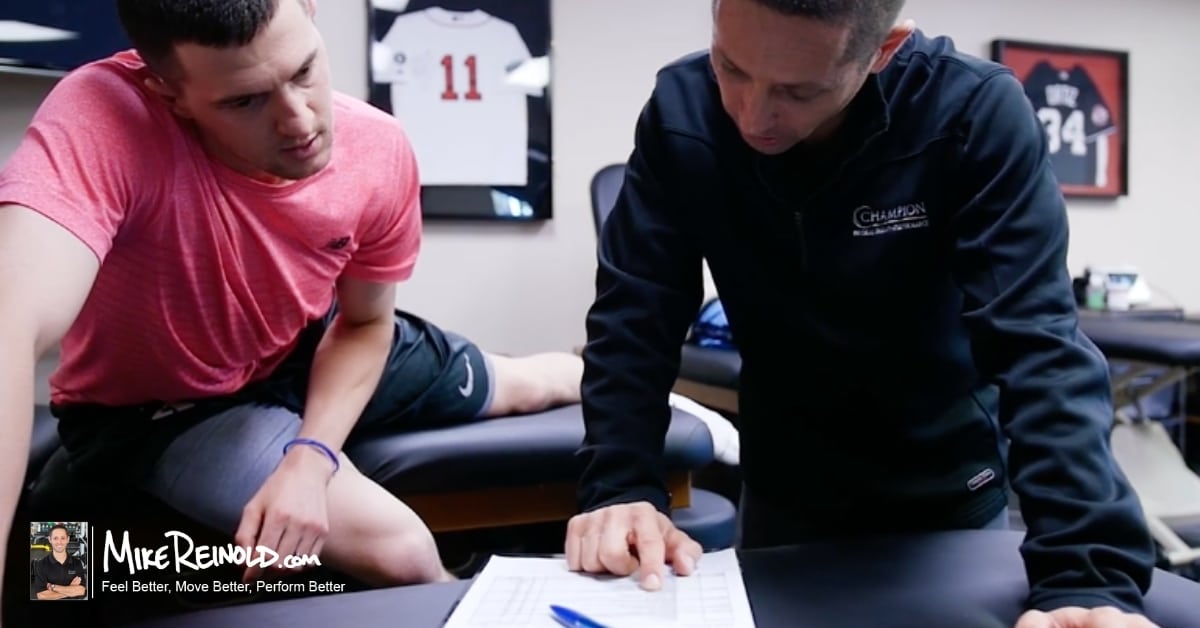At the end of each year I try to reflect back on some of the things that I have learned over the year. I think it’s a great thing for us all to do. I know it helps me grow and continue to push myself to never stop learning. Below are 5 things I learned in 2015, but I really want to here from you as well. Please comment and share what you learned this year too!
Movement Versus Mobility

People are warming up on foam rollers, incorporating a dynamic movement warmup, and assessing their mobility to try to improve deficits.
It’s great. However, it’s really easy to screw up too.
If you focus on generically increasing mobility, many times your body takes the path of least resistance and you just make the loose area looser, neglecting the real issue. If you focus on enhancing the mobility of areas that “feel tight,” you again tend to overstretch areas that aren’t really tight.
Don’t get me wrong, mobility is great. But I started to focus more on movement “quality” than “quantity” this year. Unfortunately, I think the general population is still focusing on quantity.
I feel like the majority of time when someone sees me for something like shoulder pain, back pain, neck pain, etc, I find they have been over-stretching to gain mobility and simply stopping helps. It’s addition by subtraction.
By shifting my focus to just enhancing the quality of movement instead of the quantity of mobility, I think I made big strides in helping people this year.
- Focus on the quality of movement, not the quantity of mobility – [Click Here to Tweet]
It’s All About Your Pace
Several months I ago, I posted a quick conversation I had with strength coach Michael Boyle on social media. I asked Michael how he was and he responded with “life has a really nice pace right now.”
I was floored.
I have never really thought about the “pace” of my life in this manner. We always talk about how busy, productive, accomplished, or even financially secure we are in life, but we all know that these tend to not correlate with happiness. I’ve personally been trying to reduce my stress and workload, but had been focusing on better organization and productivity. Truth is, I think this just allowed me to do more – my pace never changed!
What’s the point of being more productive to just jam more things into your life?
I was talking to Dave Tilley, a young PT in the Boston area that I really respect and encourage you to follow. We talked about when you are at the start of your career, you need to grind and put in the effort to get ahead. Sleeping in and watching TV all night is great, but not going to help you get ahead professionally. You get ahead but outworking others. There is a time for this, but the sooner you put your early efforts into enhancing the pace of your life, I think the better.
Thank you Michael… It’s not the first brilliant thing you’ve said that I have learned from you, but certainly the most profound. I’m still working towards it, but I have been focusing more on my pace than anything else.
Stop Skipping the Basics

Information is readily available on the internet these days, but the ability filter out poor quality information is nearly impossible.
When I was younger in my career, I learned from 3 main sources:
- Medical Journals with peer-reviewed scientific studies
- Textbooks authored and edited by the most prestigious in our fields and based on scientific efficacy
- Seminars and Conferences held again by the most prestigious in our fields and based on scientific efficacy
For many reasons, this is changing (I’ll discuss more below…) and sharing information is easy. Times have changed and it blows my mind that I have more readers on my website than JOSPT.
There are so many ways to learn on the internet, and so many people to learn from. But who should you trust? The information that rises to the top tends to be the most exciting and shared by articulate and engaging people. But articulate doesn’t mean accurate!
You need to be careful and I openly encourage you to never blindly trust ANYONE!
When I learn a new system, technique, or thought process, I add that to my current thought process with an open mind and attempt to integrate these new ideas with my experience and what I see in front of me. Over time, some of these new ideas stick, while I move on from others.
I’ve seen so many young people lean towards a certain system or thought process and completely jump in head first based on what people are telling them and not what they are experiencing, and assume everything is 100% accurate all the time.
I’ve changed my mind many times in my career, and so will you. Don’t spend your time defending your beliefs, you won’t grow that way. Rather, keep an open mind and be ready to adjust.
Master the basics first and then work on enhancing, or as my friend Nick Tuminello says in his presentation on RehabWebinars.com, focus on the cake first, not the icing.
Applying More Strength and Conditioning Principles to Rehabilitation
One of the basics that I think the physical therapy and rehabilitation worlds have started to skip over are the basic principles of strength and conditioning. One of the things that is giving the profession of physical therapy a bad name is the blind prescription of simple 2 sets of 10 repetitions exercises that don’t make people look, feel, or move better.
If someone comes to PT and gets a few units of passive treatment and then performs a few basic exercises (that they could have done at home), you aren’t doing your best for them. You need to learn more about the concepts of strength and conditioning and apply them to your rehabilitation programs. My rehab programs look more like strength and conditioning programs.
I’ve talked about this in some of my past articles and one of my favorite Inner Circle webinars of the year:
I’ve learned so much from the strength and conditioning world, including Eric Cressey, Mike Robertson, Mark Verstegen, Alwyn Cosgrove, Michael Boyle, Nick Tuminello, Tony Gentilcore, Greg Robins, Chris Howard, Jason Pak, Lauren Perreault, Eric Gahan, Artemis Scantalides, Dean Somerset, Pat Rigsby, Pat Beith, Ryan Ketchum, BJ Baker, Adam Vogel, Mike Campanella, and so so many more (I could list dozens more). Thank you!
If you are looking for a place to start, we released an overview of our integrated performance therapy and training system that we use at Champion PT and Performance. It’s a great resource for those looking to start this process:
Online Learning is My Favorite Path to Grow

Don’t get me wrong, there are still great conferences that I am honored to attend. And these are great environments to expand your thoughts and learn cutting edge new information. But as I get older, I don’t find myself learning as much from these types of conferences.
Rather, I have leaned more towards online resources to learn more on topics that I am interested in and that I can consume on my schedule (like at 5:00 AM…). These include online courses, websites, and podcasts. In fact, this is the primary reason I have decided to start a podcast (or two, we’ll see…) in 2016. I love learning in chunks on my schedule.
As you’ve probably noticed, I am doing more and more of my education online for these reasons. I LOVE being able to have my Inner Circle program where I get to share deeper thoughts each month with those that are interested. It’s my favorite part of what I do.
Stay tuned for more info on my upcoming podcast(s) and in the meantime, if you haven’t yet, join my Inner Circle, you’ll be very happy:
So that’s what I learned in 2015. Now I want to hear from you. Comment on this article below and please share the one thing you have learned or changed in your mind in the past year that has been the most impactful. By sharing, you’ll help myself and many more grow. I’m looking forward to learning even more in 2016!




